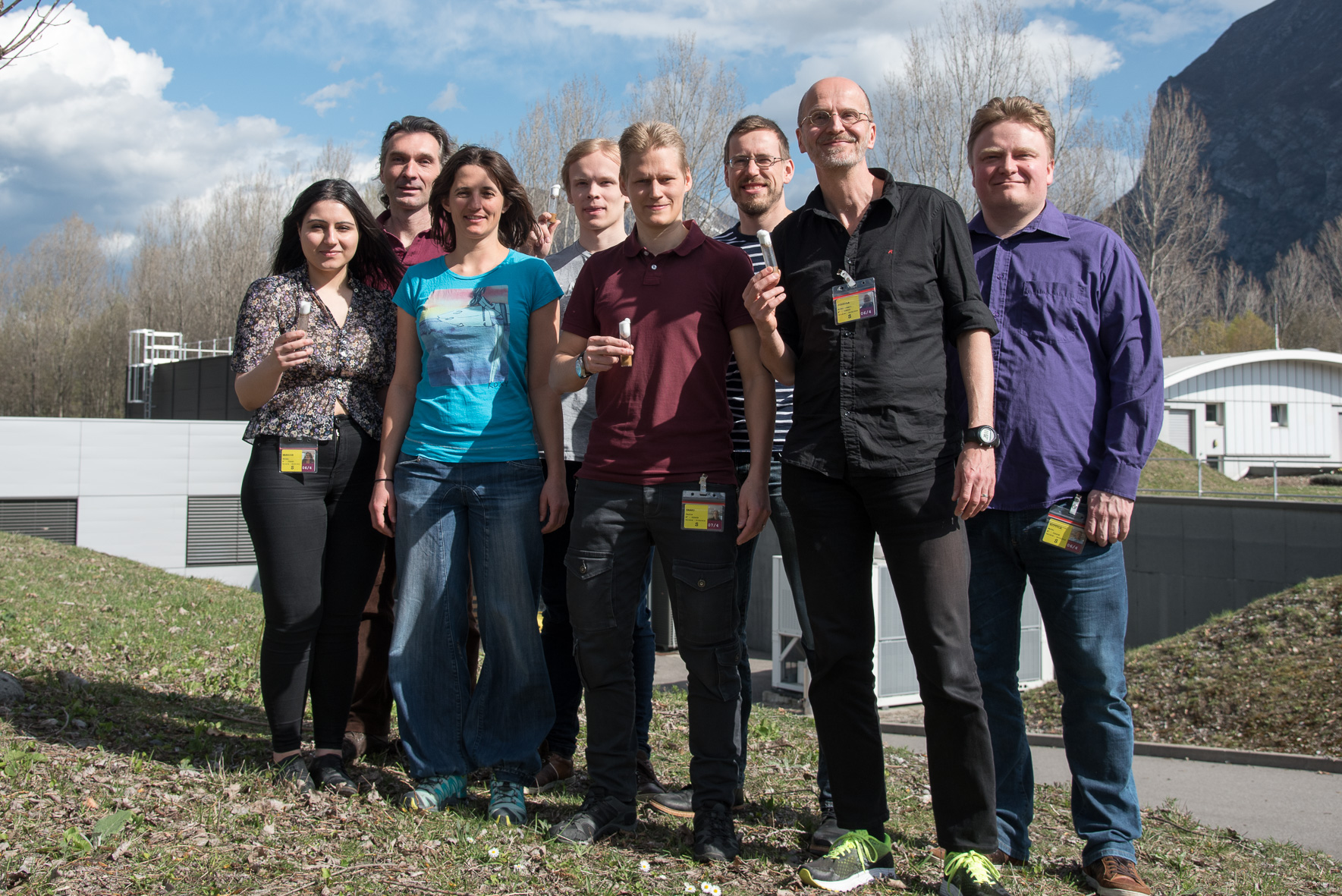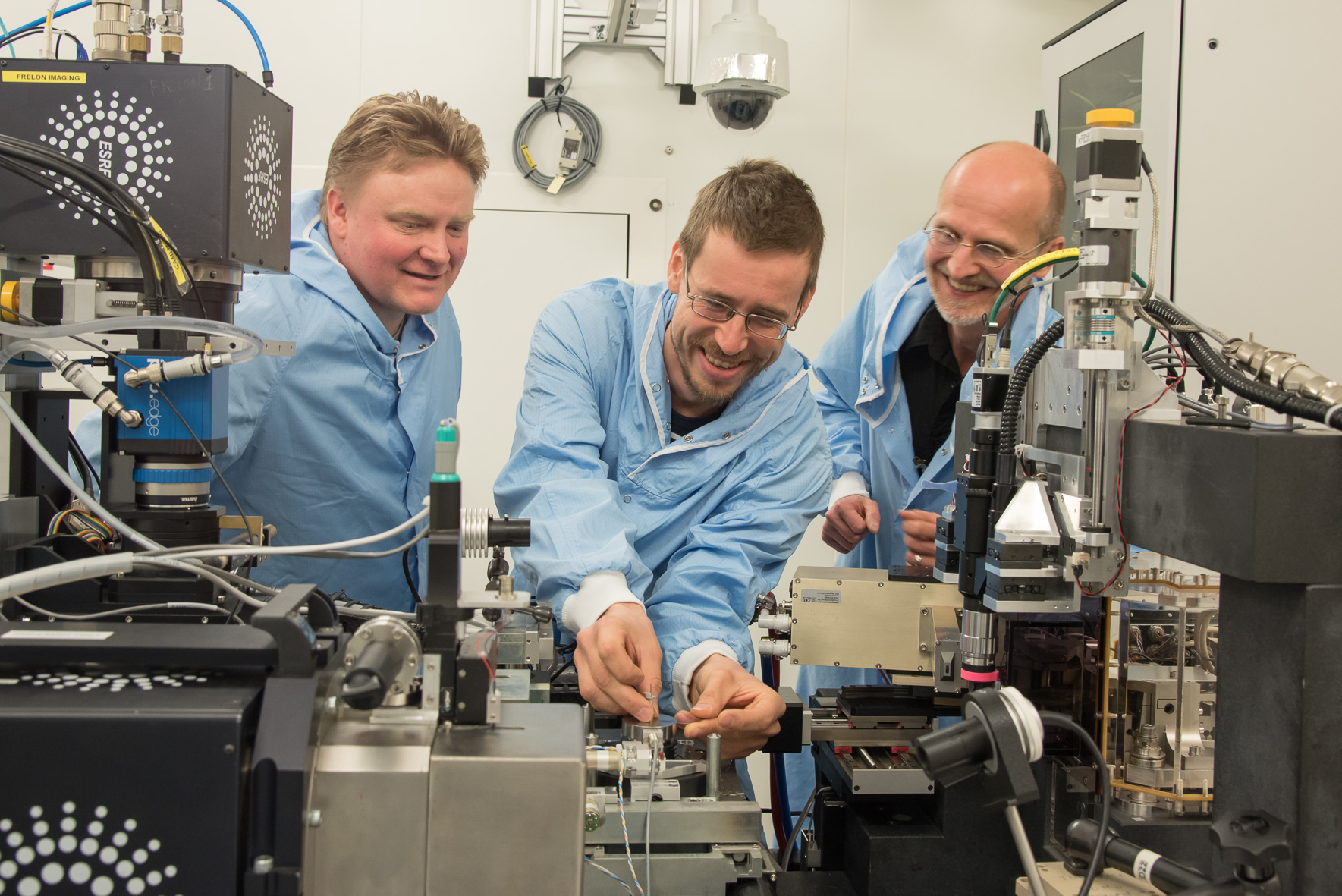- Home
- News
- General News
- #weekendusers Unravelling...
#weekendusers Unravelling the great vision of flies
09-04-2018
Fruit flies have a much better vision than what was previously believed in the scientific community. Researchers from the University of Sheffield (UK), the University of Oulu (Finland), Max IV (Sweden) and University of Szeged (Hungary) are on ID16B trying to find out what happens in the photoreceptors in these insects’ eyes.
“It had always been claimed that fly’s eyesight was very basic, but I couldn’t believe that after so many centuries of evolution this was still the case”, explains Mikko Juusola, head of the Centre for Cognition in Small Brains at Sheffield University. So he started studying vision in fruit flies a decade ago and last year himself and his team debunked previous hypothesis: they proved that insects have a much better vision and can see in far greater detail than previously thought.
Insects’ compound eyes typically consist of thousands of tiny lens-capped ‘eye-units’, which together should capture a low-resolution pixelated image of the surrounding world. In contrast, the human eye has a single large lens, and the retinal photoreceptor array underneath it is densely-packed, which allows the eye to capture high-resolution images. This is why it was believed that insects did not have a good eyesight. Until Juusola came in the picture.
 |
|
The research team from left to right: Neveen Mansour, Raimund Mokso, Julie Villanova, Joni Kemppainen, Paulus Saari, Jussi-Petteri Suuronen, Mikko Juusola & Marko Huttula ©ESRF/C. Argoud |
Juusola and his colleagues found that photoreceptor cells underneath the lenses, instead, move rapidly and automatically in and out of focus, as they sample an image of the world around them. This microscopic light-sensor “twitching” is so fast that it cannot been seen with our naked eye. “It took us seven years to come up with these results. The paper we published last September was 149 pages long as we wanted to include all the information that prove our hypothesis”, explains Juusola.
Today, Juusola is at the ESRF’s ID16B with colleagues from the University of Oulu in Finland, Max IV in Sweden and University of Szeged in Hungary to gain knowledge on the photoreceptors at the nano level and to try to create mathematical models of how well compound eyes can capture the visual world.
 |
|
Marko Huttula (University of Oulu, Finland), Jussi-Petteri Suuronen (ESRF) and Mikko Juusola (University of Sheffield, UK) on ESRF's ID16B beamline. ©ESRF/C.Argoud |
Juusola, a medical doctor by training, explains that there could be applications for cameras, for example, where the mechanism of the fly’s eye would be replicated. “I’ve been told in different conferences that I should patent our findings or that I should approach companies, but to be honest, I just want to know what takes place in the flies’ eyes as I find it fascinating. If the general public can one day benefit from all these experiments, then it is a bonus”, he concludes.
Reference:
Juusola et al. eLife 2017;6:e26117. DOI: https://doi.org/10.7554/eLife.26117
Text by Montserrat Capellas Espuny
Top image: Close-up image of the eyes of a fruit fly ©Sanjay Acharya



